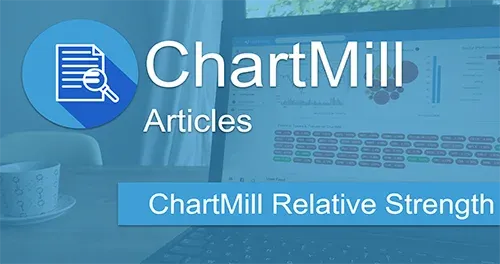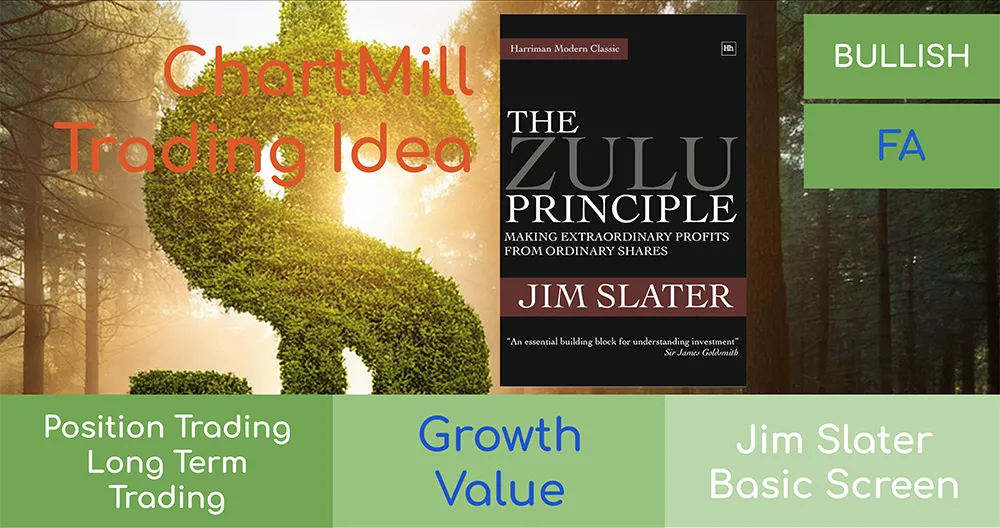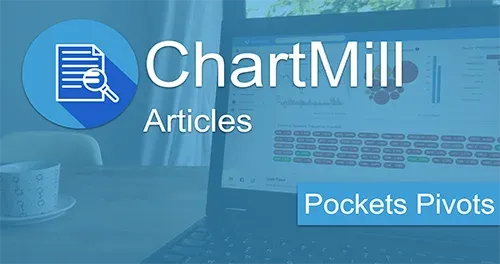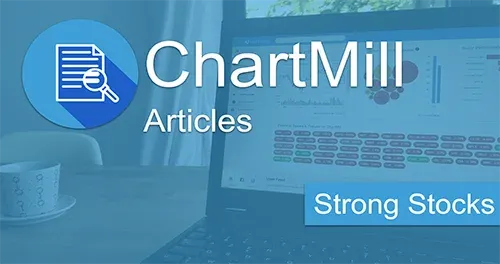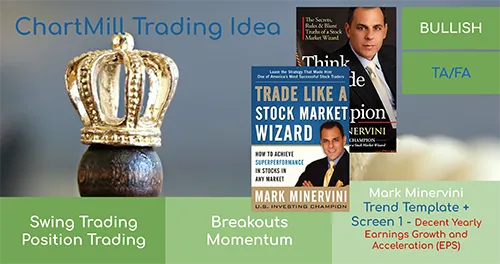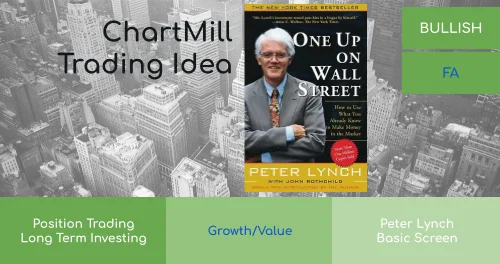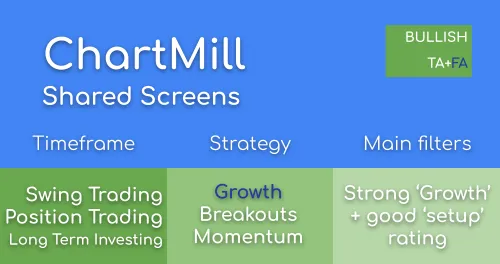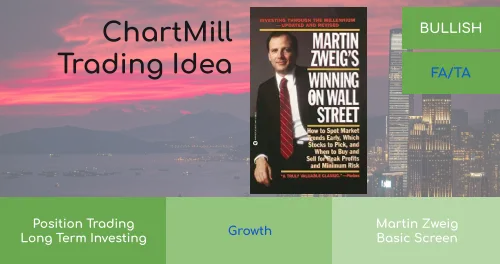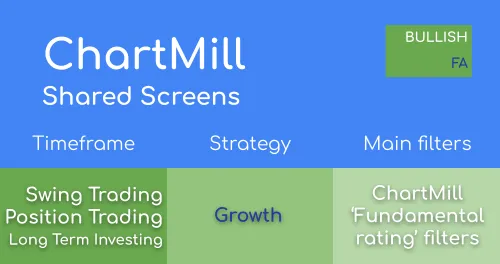
A CANSLIM stock screener – finding high growth market leaders
By Aldwin Keppens - reviewed by Kristoff De Turck
Last update: Nov 15, 2024

In the bestselling book How to Make Money in Stocks: A Winning System in Good Times and Bad, William O’Neil introduces the CAN SLIM system. The book was first published in 1988 and had a couple of revisions since.
Ever since the publication, the CANSLIM system has been widely adopted and remains popular until today. CAN SLIM is a position trading system and uses fundamental analysis combined with technical analysis and is often classified as Growth Investing.
Fundamental criteria are used to determine which stocks meet the requirements, technical criteria combined with general market direction analysis determine when the stock should be bought. Stop losses will determine when the stock will be sold. Besides these (often) quantifiable rules, the system also has less quantifiable rules which determine whether a stock is suited for the system or not. We will discuss all of this in this article.
CAN SLIM
CAN SLIM is an acronym and the individual letters stand for:
- C = Current Big or Accelerating Quarterly Earnings and Sales per Share
- A = Annual Earnings Increases: Look for big growth.
- N = Newer Companies, New Products, New Management, New Highs Off Properly formed Chart Bases.
- S = Supply and Demand: Big Volume Demand at Key Points.
- L = Leader or Laggard: Which is your stock?
- I = Institutional Sponsorship
- M = Market Direction.
For the description above, we copied the chapter names from the fourth edition of the book. In the next sections we will go over each of these criteria and describe how you can translate these criteria into filters for the ChartMill Stock Screener and other tools. We created a pre-defined screener configuration for the CANSLIM system, but we will also provide some additional filter suggestions. For a deeper and full understanding of these criteria we do advise to read the book.
C = Current Big or Accelerating Quarterly Earnings and Sales per Share
EPS growth and in this case the most recent quarterly earnings compared to the same quarter last year (Q2Q) is a major factor in the CANSLIM system. In the book, the author suggests an increase of at least 18% to 20%, but immediately mentions that 25% to 30% would also be a very reasonable minimum. For our example screen we require a minimum of 20% Q2Q EPS increase, but as always: feel free to adjust this to your own needs.
Besides the minimum required growth, the author also says that ideally this growth is accelerating. So we would like the current Q2Q growth to be higher than the growth in previous quarters. You can always manually check the most recent Q2Q growth numbers on the estimates tab on the profile pages for each stock.
If you want an explicit filter for this, you can add a filter requesting the last Q2Q growth to be above the previous Q2Q growth using a custom expression in the screener. More info in this article "Tracking EPS and Sales Acceleration: A Guide to Identifying High-Growth Stocks"
Precisely with the intention of identifying growth stocks with strong momentum, we developed the ChartMill High Growth Momentum rating score. More on that in this separate article "The ChartMill High Growth Momentum Rating"
The same should be true for sales growth. We will add a filter requiring a minimum of 25% Q2Q revenue growth.
We should mention that O’Neill also advises to check other stocks in the same industry. You should see some momentum in the whole industry and should at least find one other company which is showing similar growth numbers.
A = Annual Earnings Increases: Look for big growth.
Besides the most recent quarter earnings and sales increase, we need to make sure the companies we want to investigate deeper are not just having a good most recent quarter. O’Neill advises to look at the last 3 yearly statements and look for a minimum increase of yearly EPS numbers between 25 and 50%. We added a filter which requires a minimum 3 year EPS growth of 25%.
Besides this, we also need the company to be profitable. O’Neill advises to use the Return on Equity number here. The higher the number, the better, but we added a filter which requires the ROE at least 10%.
N = Newer Companies, New Products, New Management, New Highs Off Properly formed Chart Bases.
The conditions related to these criteria are often a bit harder to quantify. The company should be doing something new. What new means exactly is to be judged by the investor and depends on the current state of the world. At some point in time all of these things were new: railroads, airplanes, personal computers, internet, streaming, cloud computing, etc.
The book shows many examples of new companies or just companies involved in new things in the last 150 years. These new products are adopted by the general public and this is the origin of increasing revenues and profits and can continue for many years.
The criterium for ‘new highs’ is one of the aspects where CANSLIM uses a form of technical analysis and this is also where it sets itself apart from more classical fundamental analysis systems. Demanding that a stock makes new highs is basically saying: you can have all these great growth properties, but if no one else is picking up on this it does not make much sense to invest in this.
We did not include a ‘near new high’ filter in our example screen, but you can easily add this. You can either add a ‘signal’ filter on the performance tab or use a custom expression to demand any maximum distance from the 52 week high. A couple of examples are provided below. The main reason why we are not including the filter explicitly is that we will be adding a relative strength filter below.
The ‘Off Properly formed Chart Bases’ is also a bit harder to quantify, but ChartMill allows displaying the screener results as charts which allows you to very quickly go through the results and judge them manually.
S = Supply and Demand: Big Volume Demand at Key Points.
A couple of points are made in this section:
- Supply: We prefer the number of outstanding shares (and more specifically the float) to be lower because this implies “the supply” is lower. We did not include a filter in our example screen, but ChartMill allows filtering both on the float and outstanding shares number.
- Demand: this is measured in terms of trading volume. When the stock breaks out to new level we generally want this accompanied by volume peeks.
- A low debt to equity number is better in general. Our example screen requires the debt to equity ratio to be below 2.
L = Leader or Laggard: Which is your stock?
In this chapter O’Neill introduces the concept of relative strength. Relative strength is a number that indicates the percentage of all other stocks this stock outperforms. CANSLIM stocks are always high relative strength stocks. These stocks are what we call ‘market leaders’ as they outperform many of the other stocks on the market (by definition a stock with a relative strength of 80 outperforms 80% of all other stocks.).
Again, this is a purely technical component of the system and it serves the same use as the new high condition: fundamental criteria alone are not sufficient, the stock should also be recognized and picked up by others.
For our example screen we require a minimum relative strength of 75. (Which means we will only consider the 25% best stocks of the market).
We also mention here that it may be interesting to check our strong stocks filter in this context.
I = Institutional Sponsorship
A stock qualifying for CANSLIM should have at least some institutional owners. Ideally this number is increasing over the past quarters. Also, we do not want the percentage of shares already owned by institutions to be too high. Mature stocks are often largely owned by institutions. The sweet spot is when institutions are increasingly discovering the stock which will create buying pressure. When institutions already all own the stock you would expect less buying pressure. Our example screen requires the institutional ownership to be below 85%, but you can make this condition more strict.
Interesting in this context is the ChartMill support for the Effective Volume Indicator which may be used to filter for stocks that seem to have an interest from large players.
M = Market Direction.
This is again a technical component of the system and the statement made here is: always be aware of the general market direction. When you found a stock that meets all of your criteria, but the direction of the general market is down (a bear market environment), there is a very big chance your great stock will go down with the rest of the market. O’Neill advises to only search for and buy these stocks in bull markets, which is also when you will get the best returns.
Although there are many variants of market models, and there is nothing wrong with making your own analysis, we suggest having a look at the weekly SPY chart with the ChartMill Trend Indicator.
Be sure to also keep an eye on our market monitor page where several specific breadth indicators are monitored.
Other takeaways from the book.
This book is a classic and should be read by everyone who has the ambition to be a growth investor. At the same time, there are many variants of growth investing: different authors and investors use different ratios and technical indicators, holding periods, stop loss rules and there is no reason to consider this as a holy book and be a purist about it. It is perfectly fine to build your own style which can be influenced by many authors and gurus. Some other key items mentioned in the book are:
- Never ever, without exception, accept a more than 7 or 8% loss over your investment.
- Always use a stop loss.
- Always have an eye on the general market direction.
- Find proper buying points when you are entering a stock.
We mentioned it before, but the summary of all this is: no matter how great your stock is, the market is always right. You can read a bit more on different stop loss strategies here
Another useful indicator available in ChartMill is The ChartMill Setup Quality score. The book discusses many base formations which may be used as an entry point. The ChartMill Setup Quality will discover general consolidation patterns and adding this filter (for instance ‘at least 6’) will give you a list of stocks that show some kind of consolidation.
A CANSLIM stock screener
In the first part of this article we came up with a set of filters, which we combined into a shares screen for our trading ideas library and it was saved as our O'Neill CANSLIM High Growth screen. We consider this the base of a CANSLIM screen, where we apply the following filters:
- Q2Q EPS growth above 20%
- Q2Q Revenue growth above 25%
- 3 year EPS CAGR growth of 25%
- An ROE of at least 10%
- A debt equity below 2
- A relative strength above 75
- Institutional ownership below 85%
- A minimum average volume of 100K shares per day to ensure liquidity.
You can directly go to this screener configuration here.
Finally, we do believe you should use this as a starting point and fine tune the screen to your personal needs. For your convenience we are linking some alternative configurations below, but of course, many other variants are possible.
- The base screen, with the output displayed as weekly charts including the Effective Volume indicator: weekly charts give a nice overview of the trend, while the indicator suggests institutional buying pressure. Going over the charts also allows you to quickly scan for base formations.
- The base screen with an additional filter to keep only those showing a setup pattern. The charts are daily charts and the pocket pivot indicator was added to the charts.
- The base screen with an additional filter requiring the current price to be at most 15% from the 52 week high
- The base screen with an additional filter requiring future year EPS growth of at least 20%
- The base screen with additional filters requiring a float below 100 Million and increasing institutional ownership
As always: there are many other possibilities and these are just some examples to get you started. Enjoy!

